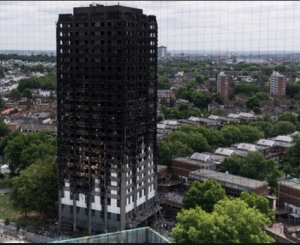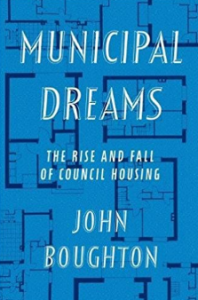
Tories laid the foundations for the housing crisis



The slum clearances of the late nineteenth century as Boughton asks why the state’s duty to house its people decently became central to our politics. He also shows how the loss of the dream of good housing for all is a danger for the whole of society – as was seen in the fire in Grenfell Tower.
Decent housing properties are converted into unaffordable luxury as the council blocks looming over some of the world’s most expensive streets, once created for the working classes can look like a blackened bookend. The local councils have ignored local voices, coupled with municipal meanness and inadequate regulations and an incentive to monetise and make a profit from every corner of contemporary life.
John Broughton’s Municipal Dreams saw last year demolition of Robin Hood Garden, a huge concrete estate built in the late 1960s to the design of Alison and Peter Smithson, consisting of 1000 flats built in the London’s Docklands, the symbol of the city’s global financial centre.
In the 1970s and 1980s, many estates were stigmatised as “ Concrete Jungles” or “sink estates” which were an expression of a golden age of municipal beneficence and of a belief that decent housing was a right, not a privilege.
The scene is set in Shoreditch, east London when the building of the Capital’s first local government housing represented. By 1981, 82 per cent of households in the borough of Tower Hamlets lived in council homes.
Broughton recounts how councils were incentivised to build high rises and how Labour and Conservative administrations competed to build more houses.
The Tory government talks of the austere constraints imposed by weak public finances. But between 1945 and 1951, despite crippling debts, labour and material shortages in the years that followed the second world war more than 800, 000 council homes were built.
In 1953, it was Patrician Harold Macmillan, a Tory housing minister boasted completing 318, 000 new home in one year alone. However, Margaret Thatcher’s government would put a stop to all that when it came to power in 1979. Council housing was seen by a new generation of Conservatives as a last resort for the neediest. Homes were sold off under the “right- to- buy”
The policy that became one of the main features of the Thatcher era, in which tenants were handed the keys to the property-owning democracy – a popular vote winning political move. But it proved costly as the money raised from the sales could not be used to build more housing. Broughton, reveals the neglect, the underfunding and the often slapdash build quality.
Currently, the government pays £9.3bn a year in housing benefits to private landlords. If these tenants were renting in affordable council homes, the government would save a lot of money. As the loans taken out to build public housing were invariably paid back and the stock became an asset both socially and financially.
Municipal Dreams: The Rise and Fall of Social Housing by John Broughton, Versa, £18.99, 336 pages.
